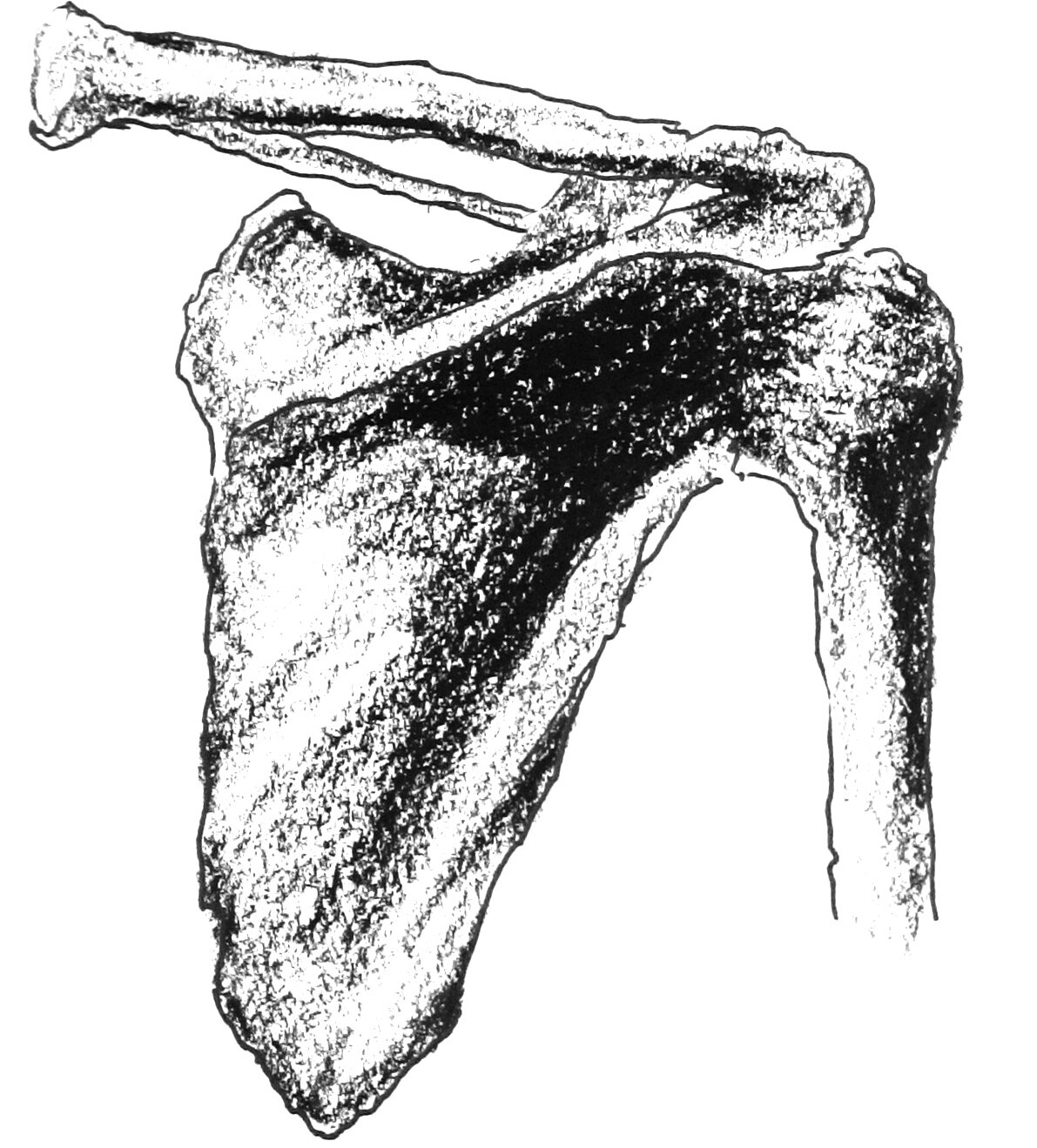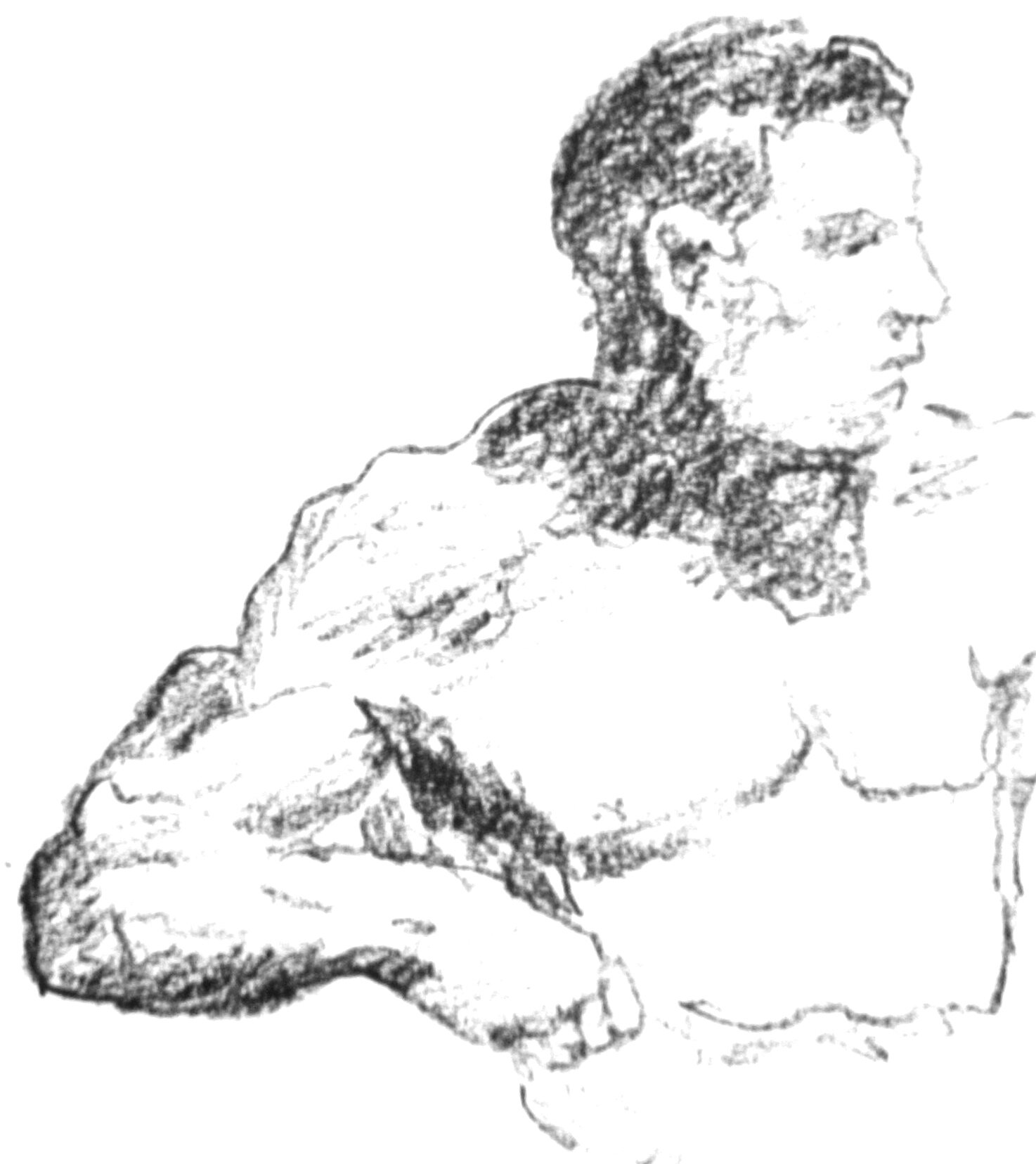Rotator Cuff Injuries
The rotator cuff, or rotary cup is a group of muscles and tendons in the shoulder. The shoulder joint is highly mobile. It has a large range of motion that includes reaching over the head and behind the back. This tendency for increased range of motion unfortunately renders it susceptible to increase injury.
The shoulder joint is similar to a ball and socket, like we have in our hips. The leg and arm bones form a ball at the end, and that ball fits into a socket that lets it move and twist in any direction. The socket in the hip is made from solid bone and is quite resilient and tends to be more stable then the socket in our shoulders. This is made up of mostly connective tissue and is held in place by the rotator cuff muscles and tendons
drawing by Justin Bean
These connective tissues may become injured or inflamed. These injuries are commonly referred to as a tear. A torn rotator cuff is a common diagnosis and may lead to a surgical intervention. It may not be well understood by most patients that a rotator cuff tear is not the same kind of tear as a torn piece of paper. Most tears are not really tears the way we think of them at all but are a sort of fraying of the muscle on one side, that leaves a rough edge.
Overuse, like that which occurs while playing extreme sports can lead to these injuries as can underuse, like sitting too long in one position while clicking the computer mouse. Most rotator cuff muscle tears are not torn all the way through and can be healed by non surgical methods.
drawing by Justin Bean
Some rotator cuff tears are asymptomatic, the patient is unaware or them. They may have occurred at some time, caused minimal pain that was temporary, and then resolved on their own. The patient may not have noticed any difficulty with range of motion or overall strength. In some cases symptoms only occur when the patient tries throwing a ball or rowing a boat. If symptoms become difficult to endure from hooking up your seat belt or putting on a sweater, an investigation may be warranted.
If there is significant pain just trying to sleep or if the patient can’t raise their arm over their head or reach behind their back, treatment may is indicated.
drawing by Justin Bean
Acupuncture is highly effective. Either after surgery or as an alternative to it, acupuncture commonly resolves the inflammation that associates with the condition, allowing full range of motion, a return of muscle strength and the elimination of the discomfort that most patients experience.
Other kinds of treatment may include medications to block inflammation or the pain itself, shots of various types, physical therapy with exercises, electrical stimulation, ultrasound waves, ice and heat or even surgery.
When considering options, it makes sense to remember, the amount of pain and suffering experienced, does not indicate the severity of the condition or the best approach to take. Some complete tears should be reattached as soon as possible and require surgery even if they are not even painful while some much smaller tears are mostly benign and since they are inflamed, cause great suffering and loss of range of motion. Just because the shoulder hurts like crazy and the arm can’t move at all doesn’t mean that conservative treatment is not worth a try.
drawing by Justin Bean
Shoulder pain is not alway due to rotator cuff disfunction. In many cases the rotator is not involved at all. In others it may become inflamed due to another cause like nerve inflammation coming from the neck, tendonitis, bone spurs or rarely, even the beginnings of some sort of disease.
drawing by Justin Bean
Self care involves rest or exercises, either of which could improve or aggravate the condition so I suggest caution and a bit of trial and error. Heat or ice may be applied topically. Liniments may also be used but not immediately before or after heat.
drawing by Justin Bean
The tendons of the rotator cuff, not the muscles, are most commonly involved and of the four, the supraspinatus most frequently, as it passes below the acromion. Such a tear usually occurs at its point of insertion onto the humeral head at the greater tubercle.[3]
The cuff is responsible for stabilizing the glenohumeral joint and rotating the humerus outward (external rotation). When shoulder trauma occurs, these functions can be compromised. Because individuals are highly dependent on the shoulder for many activities, overuse of the muscles can lead to tears, with the vast majority again occurring in the supraspinatus tendon.
From Wikipedia...





